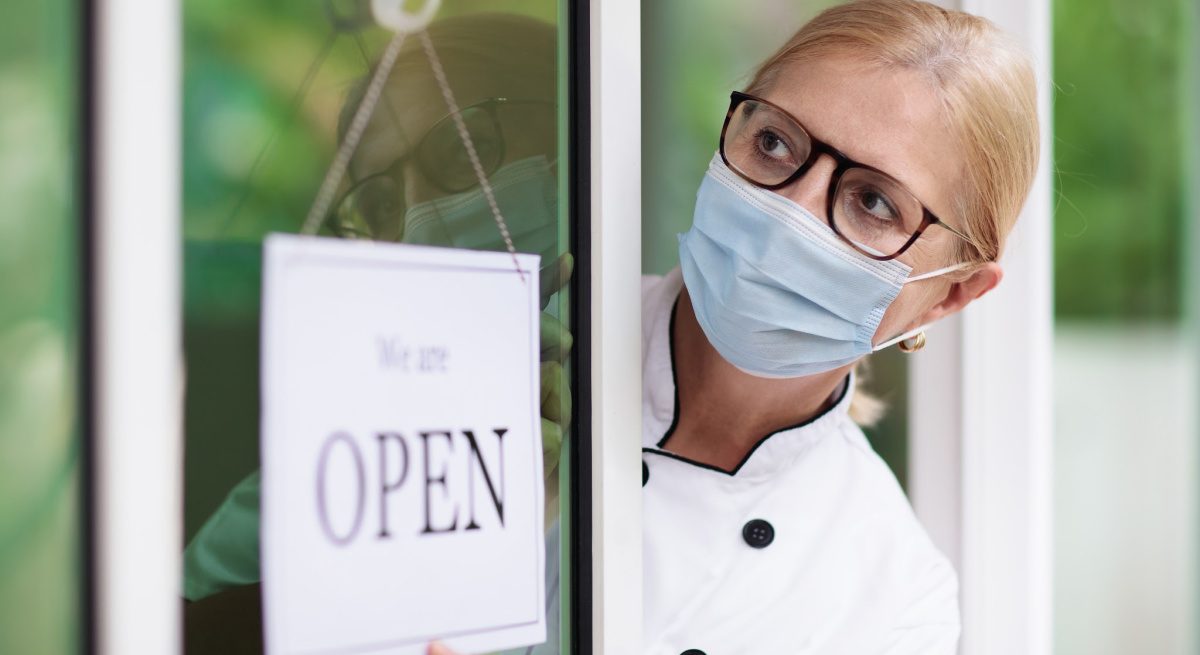Lessening Employee Anxiety as Restaurant Doors Open
4 Min Read By MRM Staff
As more restaurants in the United States receive the go-ahead to open their doors for indoor dining, Modern Restaurant Management (MRM) magazine reached out to industry experts on ways to calm employee anxiety. Here's some of their advice.
Rick Camac, Dean of Restaurant & Hospitality Management at the Institute of Culinary Education
For FOH:
- Assure front of house staff that you are complying with or exceeding all regulatory local, state and federal rules and regulations. That includes social distancing, sanitation, masks, partitions and contactless payment and menus (or throwaways).
- Assure your staff that you will ask / require all diners to wear masks whenever they get up from the table.
- You will test all employees’ temperatures daily, if not more, and send them home when sick.
- You will take guest temperatures, if, and when, allowed.
- You will not require them to do anything against any laws or regulations.
- You will give them the proper tools to get their jobs done.
- Assure them you have done absolutely everything to ensure a safe environment and that their health is your priority.
- Paying for their healthcare (or at least most of it) would be a really nice perk in today's environment.
For BOH:
- Most of the same applies to the health of BOH as well. Even though they have less interaction with guests, they do have plenty of interaction with FOH staff. So, if someone from FOH gets sick, they too are vulnerable.
- Over and above these suggestions, if you have the size to spread out your kitchen you should do so. This can be quite expensive in most cases and may not possible in some (especially in NYC).
- Food handlers must wear gloves, hats and masks.
- Kitchens must be sanitized, per recommended guidelines.
Florida restaurateur Suzanne Perry of Datz Restaurant Group shared dos and don’ts of post-COVID-19 bar etiquette for bartenders.
- Do be patient with people as they adapt to a new environment and a new set of rules for dining out.
- Do connect with every guest. People are stressed and worried about their jobs, the economy, their health. Going out to eat and drink is a way to blow off some steam and enjoy some simple pleasures again. If you make them feel welcomed, they will continue to come back again and again and will remember your personal touch on their experience.
- Don't complain to your guests or fellow staff members. Now is the time to come together and stay positive.
- Don't shortcut anything. Follow the new guidelines your employer has set forth. They are for your own safety too.
- Do remain positive. Positivity is the ability to always see the good in any situation. So be the person that finds the good and keeps everyone looking on the brighter side
Shannon Pfeffer, an executive coach with Syrup Coaching,. who has dealt with a great deal of employee anxiety within and without a pandemic.
The number #1 thing owner/operators can do for their employees is give a sense of psychological safety. Let the employees be heard, be listened to, be understood, and given space. This 'return to work' is new for us all and no one is going to get it right. But we can do better by treating ourselves and our teams better.
Donald L. Chu, President & CEO, Tronex International, Inc., a U.S.-based manufacturer, distributor, and marketer of advanced Personal Protective Equipment (PPE)
Working closely with top restaurant and hospitality chains, we have seen best practices continuing to evolve and expand in response to the pandemic. From our perspective as PPE suppliers, the best approach to help allay staff concerns and minimize their risks is for restaurant management to take the lead in both setting and enforcing protocols and messaging. Key steps should include:
- Reinforcing the importance of hygiene outside of work and at home:
- If the coronavirus has taught us one thing, it is a renewed dedication to personal responsibility. As restrictions are lifted, it is critical that each of us continue our healthy habits – at home, in public, and at work – and take a mindful approach to managing our exposure.
- Expectations for employee hygiene and self-care should be clearly outlined and consistently enforced to minimize risks for every staff member.
- Setting high standards for safety measures that prioritize worker protection, including:
- Establishing a comprehensive safety strategy that is consistently reviewed and reinforced.
- Providing the safest possible working conditions through such measures as implementation of quality PPE, safely distanced work stations, traffic flow plans that minimize physical overlap, division of tasks to minimize shared surface contact (i.e., only bussers clear tables; only servers wipe down tables between seatings), and enhanced sanitation schedules.
- Management intervention protocol for handling guest concerns that escalate beyond staff’s ability to manage effectively.
- Conveying safety strategy to customers throughout their user experience:
- Website and social media content that outlines the restaurant’s hygiene and personal protection strategies; utilization of notification opportunities on apps like OpenTable to highlight safety precautions.
- Prominent signage stating rules and expectations of guests and staff.
- Visibly demonstrated PPE implementation and enhanced sanitation efforts.
- Calm, firm reinforcement of rules. Management may want to request that guests who won’t comply with stated rules leave the premises, providing staff and other guests the reassurance that their safety is of highest concern.
Overall, workers can consider PPE as safety barrier in both physical and psychological terms. Through proper and consistent use of facial, hand, and body protection, staff can feel safer knowing their airways and skin have a layer of protection from airborne droplet exposure as well as knowing their properly implemented PPE will provide visual reassurance to customers that caution is being exercised and safety being addressed for both worker and guest.

